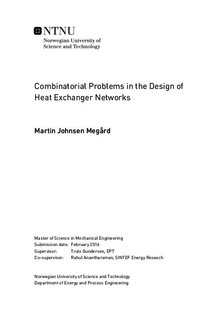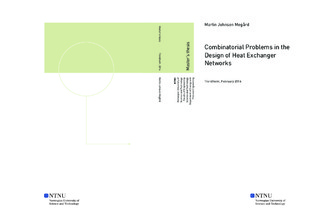| dc.description.abstract | Abstract
Heat Exchanger Network Synthesis (HENS) is one of the most researched areas in process synthesis. The main objective of this work is to evaluate the possibility of implementing an alternative stream match generator into the Sequential Framework, to reduce the computational problems in the Mixed Integer Linear Programs (MILPs) formulations in larger HENS problems. The Sequential Framework is an iterative framework for the near-optimal synthesis of heat exchanger networks. Previous research has proven that the Sequential Framework has trouble solving larger problems (30+ streams), due to the large amount of binary variables. An alternative formulation, the sequential match reduction approach, is evaluated and implemented into the Sequential Framework, due to its ability to solve larger HENS problems by introducing binary variables for a selected group of matches.
The sequential match reduction approach has been coded into three General Algebraic Modeling System (GAMS) solvers, which have been implemented into the original framework. The two approaches have been used to solve 3 case studies of varying size from literature, and the results from the optimization process is documented in this thesis.
The solution quality for the original Sequential Framework proved a preferable alternative for HENS of smaller problems, where both the qualitative and quantitative aspects of the optimal networks generated were closer to the optimal solution.
Even though the implementation of an alternative stream match generator in SeqHENS led to networks with inferior qualitative and quantitative aspects to the original SeqHENS, the adapted framework had an ability of generating heat load distributions (HLDs) for larger problems, where the original framework could not generate a HLD due to combinatorial complexities.
However, after the generation of HLDs for larger problems, limitations in the network design procedure were detected. Due to the constraints of the Non-Linear Program (NLP) formulation used to optimize the network structure for the HLDs, the optimal HLDs generated for larger problems could not be designed. This limits the comparability of the networks for larger case studies. | |

